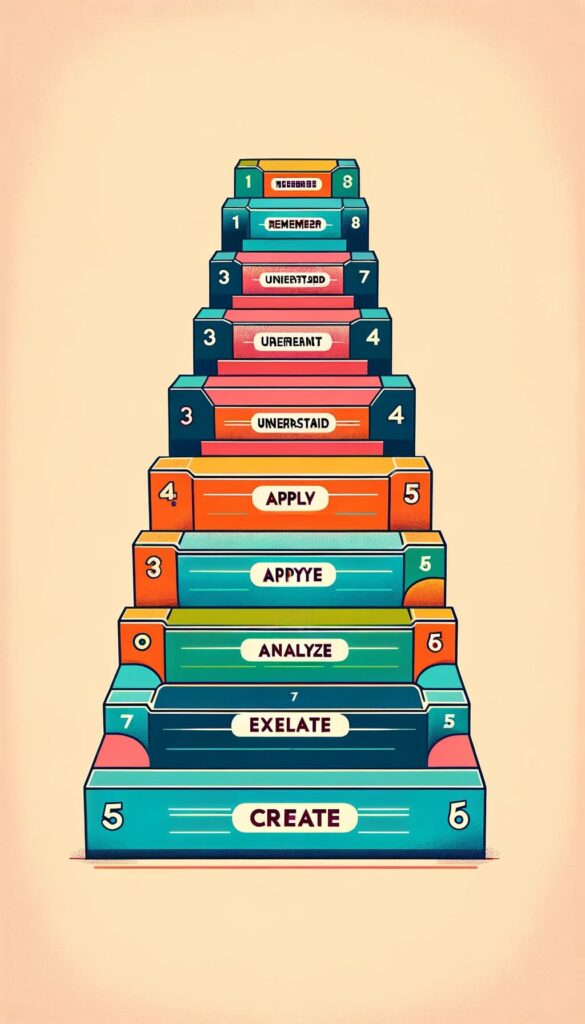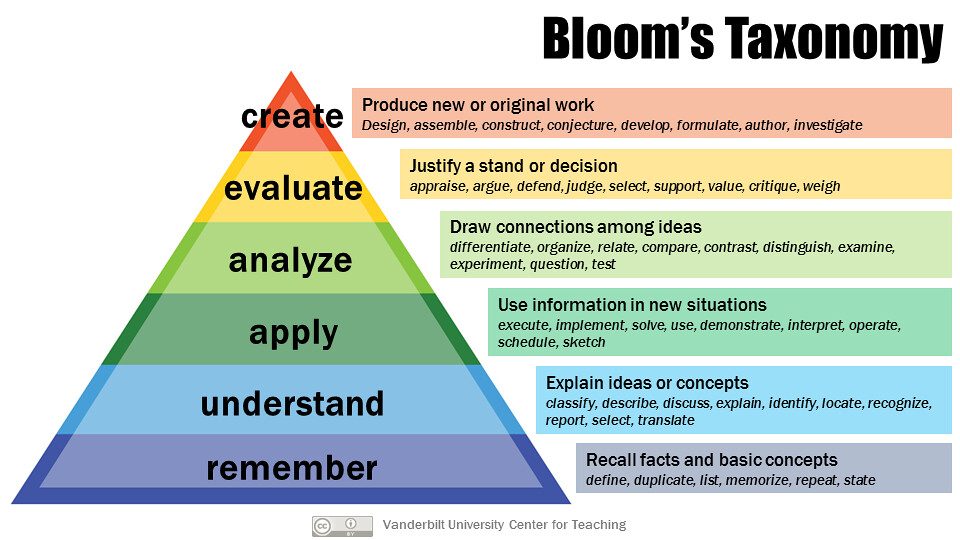Boost Your TEFL Game: Incorporating Bloom’s Taxonomy for Deeper Learning
Bleep bleep bloop bloop, this was written by AI. I wanted to test an open source LLM I have running locally on my M1 Mac.
Introduction

Bloom’s Taxonomy is an educational framework developed by Dr. Benjamin Bloom in the early 1950s that categorizes cognitive processes into a hierarchical structure, ranging from lower-order thinking skills (LOTS) to higher-order thinking skills (HOTS). The taxonomy has been widely used across various disciplines, including teaching English as a foreign language (TEFL), to enhance the learning process and promote critical thinking among students. This essay explores how Bloom’s Taxonomy applies to TEFL, examining its relevance, application methods, and benefits for both teachers and learners.
(That’s definitely not DALL-E’s finest work.)
Relevance of Bloom’s Taxonomy in TEFL
Bloom’s Taxonomy is particularly relevant in TEFL because it provides a structured approach to designing effective lessons that facilitate language acquisition, promote critical thinking, and encourage the development of communication skills. By organizing learning objectives around specific cognitive domains, teachers can create more engaging and challenging activities for their students. Moreover, Bloom’s Taxonomy enables educators to differentiate instruction based on learners’ abilities and preferences, ultimately leading to a more inclusive and personalized teaching environment.
Application Methods of Bloom’s Taxonomy in TEFL
There are several methods through which Bloom’s Taxonomy can be applied in TEFL:
- Lesson Planning: Teachers can use the taxonomy as a guide for organizing their lessons by incorporating objectives that target different cognitive domains. For instance, at the recall level, teachers may design activities that focus on vocabulary and grammar, while at the synthesis level, they could encourage students to create their own sentences or stories using new language structures.
- Activity Design: By aligning learning activities with specific cognitive domains, educators can create a variety of exercises that promote active engagement and deep understanding of the target language. For example, teachers might ask students to analyze a text by answering comprehension questions (comprehension), summarize key points in their own words (understanding), or discuss the author’s perspective on a particular topic (evaluation).
- Assessment: Bloom’s Taxonomy can be used to develop assessment tools that measure students’ progress based on their ability to demonstrate higher-order thinking skills. Teachers may use rubrics, checklists, or other evaluation methods that reflect the desired cognitive outcomes for each level of the taxonomy. This helps ensure that assessments are both meaningful and aligned with learning objectives.
- Differentiation: By acknowledging students’ varying learning styles, preferences, and abilities, teachers can adapt their instruction to address the diverse needs within a classroom. Bloom’s Taxonomy offers an effective framework for differentiating instruction by providing specific targets for each cognitive domain. This allows educators to provide tailored support to individual learners while still maintaining a cohesive curriculum.
Benefits of Using Bloom’s Taxonomy in TEFL
Implementing Bloom’s Taxonomy in TEFL offers several benefits, including:
- Improved Learning Outcomes: By focusing on higher-order thinking skills, teachers can promote deeper learning and critical thinking among students. This helps them develop a more comprehensive understanding of the target language and its underlying cultural context.
- Enhanced Teacher Preparation: Utilizing Bloom’s Taxonomy encourages teachers to carefully consider their instructional goals and design lessons that are aligned with these objectives. This results in more effective planning, which in turn leads to improved learning outcomes for students.
- Increased Student Engagement: When learners are actively involved in the learning process, they become more invested in their own education. By incorporating Bloom’s Taxonomy into lesson plans and activities, teachers can create a more engaging and challenging environment that motivates students to take an active role in their language acquisition journey.
- Greater Flexibility: The hierarchical structure of Bloom’s Taxonomy allows educators to adapt their instruction based on the needs and abilities of individual learners. This increased flexibility helps ensure that all students have access to a quality education, regardless of their background or learning style.
Conclusion
Bloom’s Taxonomy is an invaluable tool for TEFL professionals who seek to create engaging and effective learning experiences for their students. By incorporating the taxonomy into lesson planning, activity design, assessment, and differentiation strategies, educators can facilitate deeper learning, promote critical thinking, and foster a more inclusive and personalized teaching environment. Ultimately, Bloom’s Taxonomy offers a powerful framework for enhancing language acquisition and cultivating a lifelong love of learning in TEFL classrooms around the world.

By The Way…
The categories in the taxonomy are: Knowledge, Comprehension, Application, Analysis, Synthesis, and Evaluation. A well-written blog post begotten from a human brain would remember to mention that somewhere. The Vanderbilt University Center for Teaching has one worth reading.







